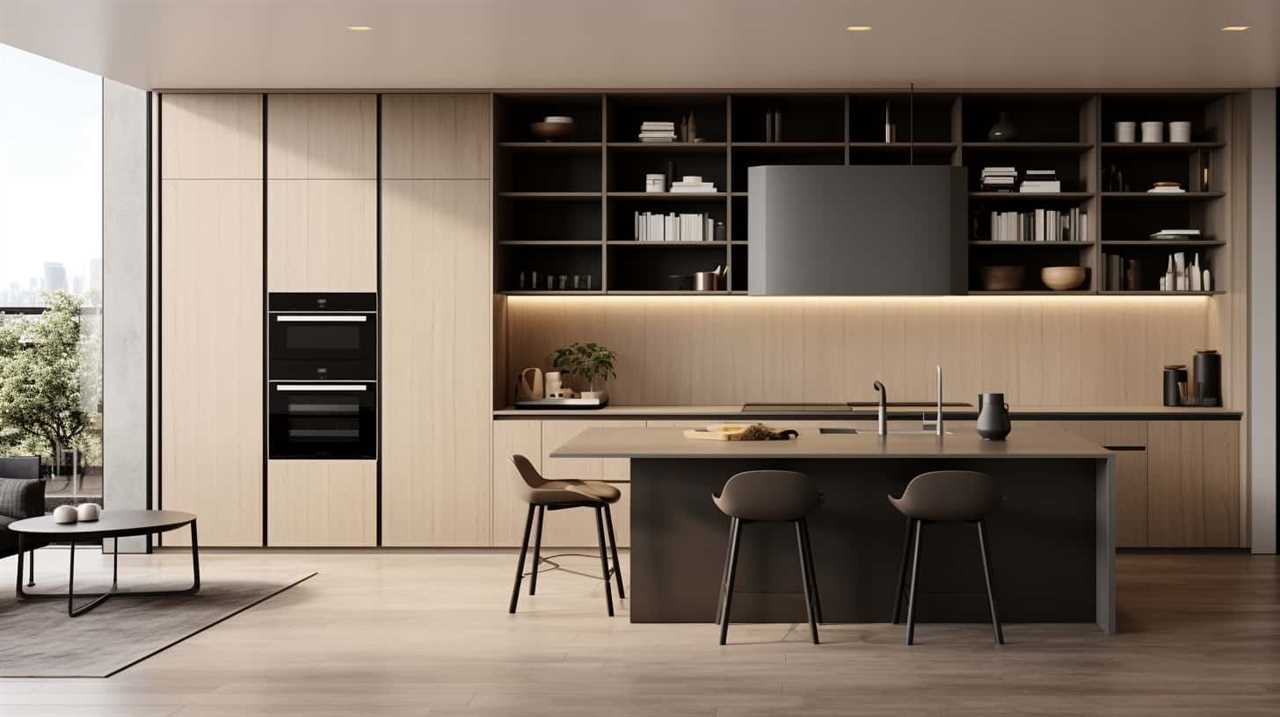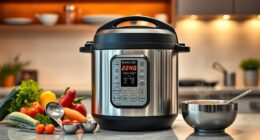Are appliance stores willing to accept trade-ins? Absolutely! In fact, they are actively seeking them out.
You see, when you bring in your old appliances to trade in, you’re not only getting rid of the old, but you’re also making way for the new. And who doesn’t love shiny, brand new appliances?
So, in this article, we’ll dive into the world of trade-ins at appliance stores, exploring the benefits, the process, and even some tips for maximizing your trade-in value. Let’s get started!
Key Takeaways
- Appliance stores offer trade-in credits, allowing customers to maximize savings.
- Trade-ins at appliance stores can lead to lower utility bills by opting for energy-efficient models.
- Trading in appliances contributes to a greener future by reducing carbon footprint.
- Customers can enjoy cost savings and sustainability simultaneously by taking advantage of trade-in programs at appliance stores.
The Benefits of Trading In Appliances
Trading in appliances offers several advantages for us.

Not only does it provide an opportunity to maximize savings, but it also allows us to explore eco-friendly options.
When we trade in our old appliances, we can often receive a credit towards the purchase of new ones. This credit can significantly reduce the cost of upgrading to more energy-efficient models, helping us save money in the long run through lower utility bills.
Additionally, by opting for eco-friendly appliances, we contribute to a greener future by reducing our carbon footprint. These appliances are designed to consume less energy and water, making them more environmentally friendly.
By choosing to trade in our appliances, we can enjoy the benefits of both cost savings and sustainability.

Now, let’s explore how trade-ins work at appliance stores.
How Trade-Ins Work at Appliance Stores
When we bring our old appliances to appliance stores for trade-ins, the process typically involves a few simple steps. First, we need to check the trade-in eligibility requirements set by the store. These requirements usually include the condition of the appliance, age, and brand. Once we determine that our appliance meets the criteria, we can proceed with the trade-in process.
The timeline for the process may vary depending on the store, but it generally follows these steps:
- Evaluation: We bring our appliance to the store, where an expert assesses its condition and determines its trade-in value.
- Offer: The store presents us with an offer based on the evaluation. This offer can be in the form of store credit or a discount towards a new appliance purchase.
- Acceptance: If we accept the offer, we provide the necessary documentation, such as proof of ownership and identification.
- Trade-in: We leave our old appliance with the store and receive the agreed-upon compensation.
Accepted Appliances for Trade-In
When considering trade-ins at appliance stores, it’s important to understand which appliances are eligible for trade-in. Accepted appliances typically include refrigerators, washing machines, dryers, dishwashers, and stoves.

The trade-in value of these appliances is calculated based on factors such as age, condition, and brand. Understanding the trade-in process and the criteria for accepted appliances can help customers make informed decisions when looking to upgrade their appliances.
Eligible Trade-In Appliances
We accept a wide range of appliances for trade-in at our store. Trading in your old appliances can offer several benefits, such as saving money on a new purchase and reducing waste by recycling old appliances.
The trade-in process is simple and straightforward. When you bring your appliance to our store, our experts will evaluate its condition and functionality. We consider factors such as age, brand, model, and overall condition.
Once the evaluation is complete, we’ll provide you with a trade-in value for your appliance. This value can then be applied towards the purchase of a new appliance from our store.

Now that we’ve explained the process of trade-ins, let’s move on to the next section where we’ll discuss how the trade-in value is calculated.
Trade-In Value Calculation
To determine the trade-in value of accepted appliances, our experts evaluate various factors such as the age, brand, model, and overall condition of the appliance. The trade-in value estimation process involves a thorough assessment of these key elements to arrive at a fair and accurate value.
Here are four important considerations in the trade-in value calculation:
- Age: The age of the appliance is a crucial factor in determining its value. Generally, newer appliances tend to have a higher trade-in value compared to older ones.
- Brand: The brand reputation plays a significant role in trade-in value estimation. Appliances from well-known and reliable brands often command a higher trade-in value.
- Model: Different appliance models have varying market demand and resale value. Popular models with advanced features and technology usually have a higher trade-in value.
- Overall Condition: The overall condition of the appliance, including its functionality and appearance, is carefully evaluated. Appliances in excellent working condition with minimal wear and tear typically receive a higher trade-in value.
Trade-In Process Explained
Continuing the evaluation process, our experts assess the condition and eligibility of the appliances for trade-in. We thoroughly examine each appliance to ensure it meets the requirements for trade-in. This includes checking for any damage, functionality, and age of the appliance. Our goal is to provide a fair and accurate assessment of the value of the appliance.

Trade-in programs offer several benefits for customers. Firstly, it allows them to upgrade their appliances without the hassle of selling their old ones. By trading in their appliances, customers can reduce the overall cost of purchasing new ones.
Additionally, trade-in programs promote sustainability by encouraging the recycling and reuse of appliances. This helps to reduce waste and minimize the environmental impact.
Determining the Value of Your Trade-In
When determining the value of your trade-in at an appliance store, there are several factors that can affect the final offer. These factors include the age and condition of the appliance, as well as its brand and model. Additionally, the current market demand for that particular appliance will also play a role in determining its trade-in value.
It’s important to keep these factors in mind and be prepared to negotiate with the store to get the best possible deal for your trade-in.
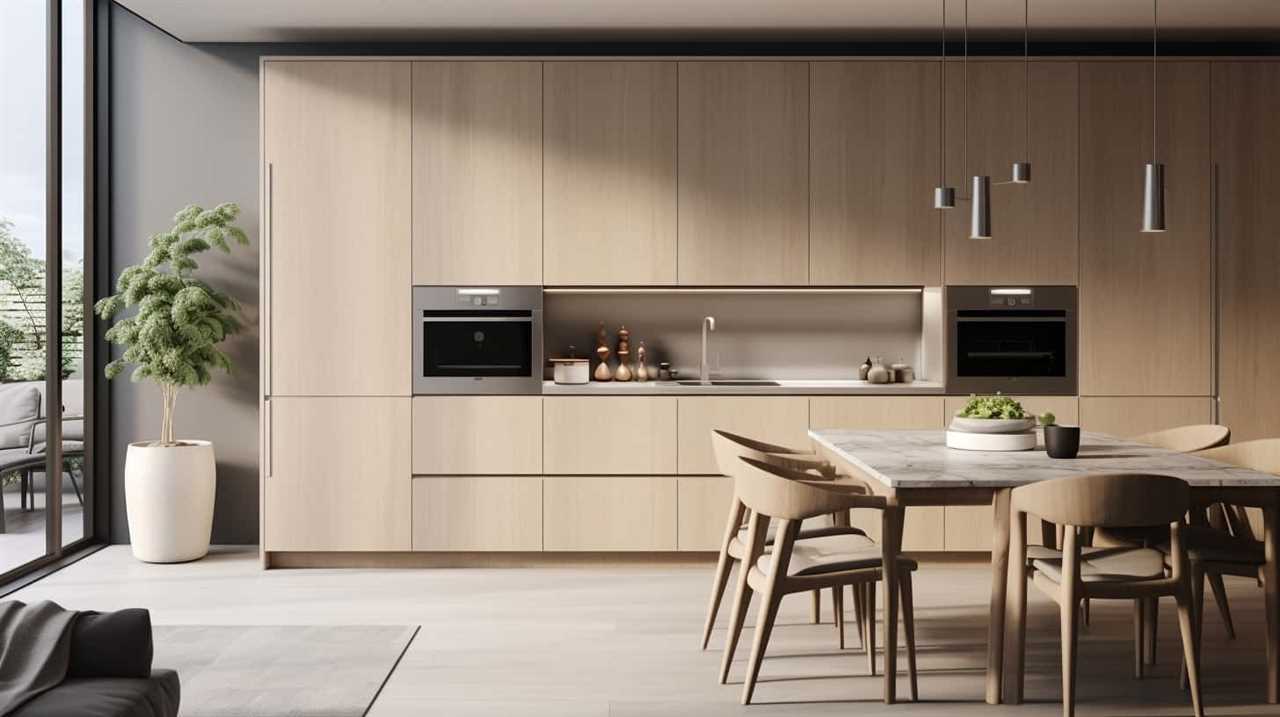
Factors Affecting Trade-In Value
We evaluate trade-in value based on several key factors, such as the age and condition of the appliance, brand reputation, and market demand. These factors greatly influence trade-in prices and can result in trade-in value fluctuations.
Here are four factors that affect the trade-in value of appliances:
- Age: The age of the appliance plays a significant role in determining its trade-in value. Generally, newer appliances have higher trade-in values compared to older ones.
- Condition: The condition of the appliance is another important factor. Appliances in excellent working condition with minimal wear and tear will have higher trade-in values.
- Brand Reputation: The reputation of the brand also affects trade-in value. Well-known and reputable brands tend to have higher trade-in values.
- Market Demand: The demand for a particular appliance model can impact its trade-in value. If there’s a high demand for a specific appliance, its trade-in value may increase.
Negotiating Trade-In Deals
To determine the value of your trade-in, we consider various factors discussed in the previous subtopic. Once you have a clear understanding of these factors, you can begin negotiating your trade-in deal. Successful trade-in negotiation strategies involve thorough research, preparation, and effective communication. Here are some key strategies to keep in mind:
- Research the market value: Before entering into negotiations, research the market value of your appliance. This will give you a starting point for your negotiations.
- Highlight the condition and features: Emphasize the excellent condition and unique features of your appliance. This can add value to your trade-in.
- Be prepared to negotiate: Have a desired trade-in value in mind and be prepared to negotiate with the appliance store. Be flexible and willing to compromise.
- Consider other incentives: In addition to the trade-in value, explore other incentives the store may offer, such as discounts or extended warranties.
- Avoid common mistakes: Common mistakes in trade-in negotiations include not doing enough research, being too aggressive or too passive, and not being willing to walk away if the deal doesn’t meet your expectations.
Tips for Maximizing Your Trade-In Value
One way to maximize our trade-in value is by properly preparing our appliances before taking them to the store. Here are some tips to help you get the most out of your trade-in:
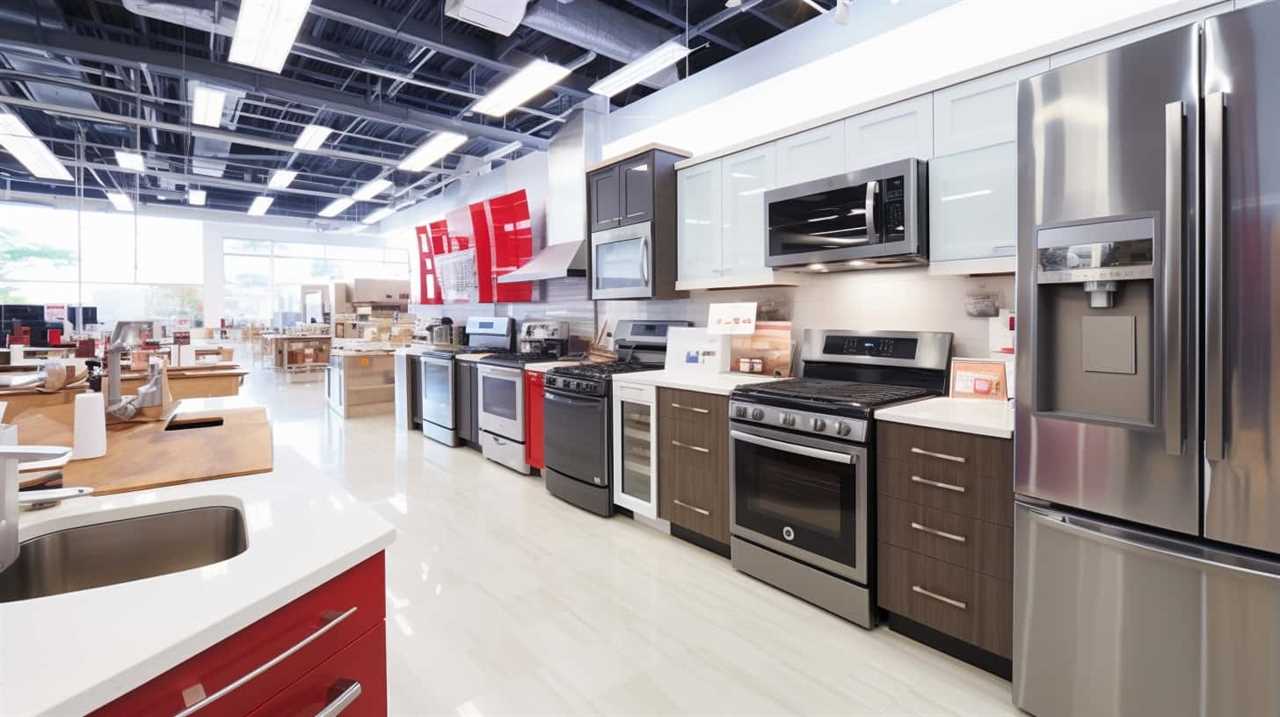
- Clean your appliances thoroughly: Make sure to remove any dirt, dust, or grime from your appliances before taking them to the store. This will give them a fresh and well-maintained appearance.
- Repair any damages: If there are any minor damages or issues with your appliances, consider getting them fixed before trading them in. This will increase their value and make them more appealing to potential buyers.
- Gather all necessary accessories: Include all the accessories that came with your appliances, such as cords, attachments, or manuals. Having these items complete will enhance the value of your trade-in.
- Provide documentation: Keep any receipts, warranties, or proof of purchase for your appliances. This will help establish their value and make the trade-in process smoother.
Trade-In Process Step by Step
The trade-in process at appliance stores typically begins with an evaluation of the items being traded in. This evaluation is done to determine the condition, functionality, and value of the items. Once the evaluation is complete, the store will provide an offer for the trade-in.
If the offer is accepted, the customer can then choose a new appliance from the store’s inventory. The trade-in process timeline can vary depending on the store and the specific items being traded in, but it usually takes a few minutes to complete the evaluation and receive an offer.
The benefits of trade-in programs include the convenience of getting rid of old appliances, the potential for receiving a discount on a new appliance, and the environmentally friendly aspect of recycling old appliances.
In the next section, we’ll compare the trade-in option with selling appliances to determine which option is better.

Trade-In Vs. Selling: Which Option Is Better
When considering whether to trade in or sell your appliances, evaluating the pros and cons of each option is essential. Here are some key factors to consider when deciding between a trade-in and selling:
- Trade-in vs. selling: financial implications:
- Trade-in: Appliance stores may offer a trade-in value, which can be applied towards the purchase of a new appliance. This can potentially reduce the overall cost of the new appliance.
- Selling: Selling your appliance directly to a buyer may yield a higher selling price compared to a trade-in value. However, you may need to invest more time and effort into finding a buyer and negotiating the price.
- Trade-in vs. selling: convenience factor:
- Trade-in: Opting for a trade-in is a convenient option as it eliminates the need to find a buyer, negotiate a selling price, and handle the logistics of selling the appliance.
- Selling: Selling your appliance gives you more control over the selling price and allows you to choose the buyer. However, it requires more effort in terms of advertising, negotiating, and coordinating the sale.
Considering these financial implications and convenience factors will help you make an informed decision about whether to trade in or sell your appliances.
Trade-In Policies at Major Appliance Stores
At major appliance stores, we offer trade-in policies for customers looking to upgrade their appliances. Our trade-in program allows customers to bring in their old appliances and receive credit towards the purchase of new ones. This not only provides convenience for customers but also helps to reduce the environmental impact of disposing of old appliances. By encouraging customers to trade in their old appliances, we promote sustainability and reduce waste. In addition to the environmental benefits, trade-in policies also have a positive impact on customer loyalty. Customers appreciate the opportunity to upgrade their appliances at a reduced cost and are more likely to return to our store for future purchases. Our trade-in program is designed to provide a win-win situation for both customers and the environment.
| Benefits of Trade-In Policies |
|---|
| Impact on Customer Loyalty |
| Promotes Sustainability |
| Reduces Environmental Waste |
What Happens to Your Trade-In Appliances
After customers trade in their old appliances, we carefully evaluate and determine the best course of action for each item. Here’s what happens to your trade-in appliances:

- Inspection and testing: Our technicians thoroughly inspect and test the appliances to ensure they’re in good working condition.
- Repair and refurbishment: If any repairs are needed, our skilled technicians will fix the appliances to maximize their value and performance.
- Resale: Appliances that are in excellent condition are cleaned and prepared for resale in our store. This allows us to offer customers high-quality, pre-owned appliances at a discounted price.
- Recycling: Appliances that are beyond repair or no longer in demand are sent to recycling facilities. This ensures that any usable components are salvaged and environmentally friendly disposal methods are employed.
Common Misconceptions About Appliance Trade-Ins
One misconception about appliance trade-ins that we often encounter is that they’re only accepted at certain times or under specific circumstances. However, appliance stores typically accept trade-ins on a regular basis, regardless of the time or situation.
Another common misconception is that the trade-in value of an appliance is solely determined by its age or condition. While these factors do play a role in determining the trade-in value, there are other factors that also come into play. These may include the brand and model of the appliance, as well as market demand and current pricing trends.
It’s important to understand that the trade-in value of an appliance can vary based on these factors, and it’s always a good idea to do some research and compare offers from different stores before making a decision.
Trade-In Options for Damaged Appliances
When it comes to damaged appliances, there are trade-in options available. Appliance stores may accept trade-ins for damaged appliances, but the trade-in value will depend on the extent of the damage.

It’s important to assess the trade-in value of a damaged appliance before deciding whether to trade it in or not.
Damaged Appliance Trade-Ins
Our store offers customers the option to trade in their damaged appliances for a discount on a new purchase. When it comes to damaged appliance trade-ins, there are a few important points to consider:
- Evaluation process: Our team will assess the condition of your damaged appliance to determine its trade-in value. This evaluation involves inspecting the overall functionality, extent of damage, and potential repair costs.
- Trade-in eligibility requirements: To be eligible for a trade-in, the appliance must meet certain criteria, including being repairable and not beyond a certain age limit. Appliances that are heavily damaged or outdated may not qualify for a trade-in.
- Discount on new purchase: Once the trade-in value is determined, customers can apply it as a discount towards the purchase of a new appliance from our store. This allows them to save money while upgrading their appliances.
- Additional repair options: In some cases, our store may offer to repair the damaged appliance instead of a trade-in. We’ve a team of skilled technicians who can assess the repairs needed and provide an estimate for the cost.
Trade-In Value Assessment
To determine the trade-in value of damaged appliances, we assess their condition and potential repair costs. Our trade-in value assessment takes into account the extent of the damage and the estimated cost of repairs. We understand that damaged appliances may still have some value, and we strive to provide fair trade-in options for our customers.
When assessing the trade-in value of damaged appliances, we consider various factors such as the age of the appliance, the severity of the damage, and the availability of replacement parts. We also take into account the potential resale value of the appliance after repairs.
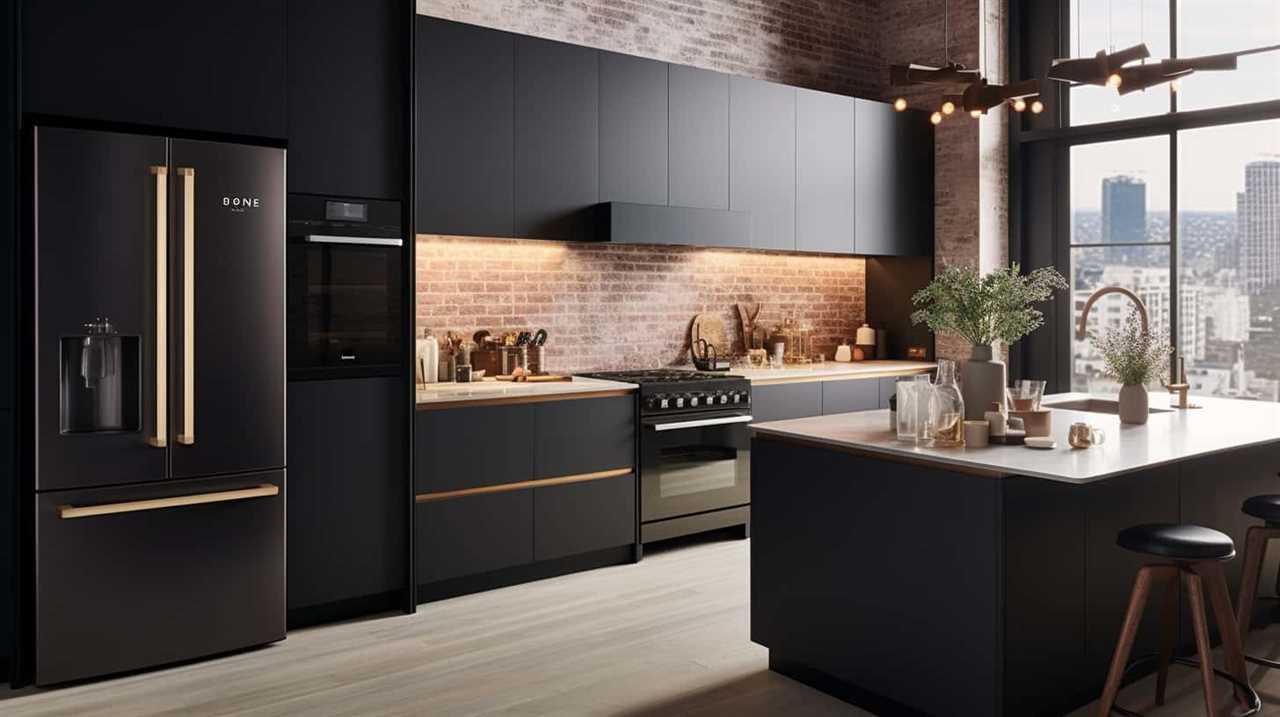
Below is an example of how we assess the trade-in value of damaged appliances:
| Condition | Repair Costs |
|---|---|
| Minor | $50 |
| Moderate | $100 |
| Severe | $200 |
| Beyond Repair | N/A |
Please note that these values are for illustrative purposes only and may vary depending on the specific appliance and its condition. Our goal is to provide our customers with the best trade-in options for their damaged appliances, ensuring a fair and satisfactory experience.
Trade-In Programs for Different Appliance Types
We offer trade-in programs for various appliance types. Trade-ins can benefit consumers in several ways:
- Cost savings: Trade-ins allow customers to offset the cost of purchasing new appliances by applying the trade-in value towards the new purchase. This can significantly reduce the financial burden on consumers.
- Upgraded technology: Trade-in programs enable customers to stay up-to-date with the latest appliance technology without having to pay the full price. This allows consumers to enjoy the benefits of newer, more efficient appliances.
- Convenience: Trade-in programs make the process of upgrading appliances easier and more convenient. Customers can simply bring in their old appliances to the store and receive credit towards their new purchase.
- Environmental impact: Trade-ins contribute to sustainability efforts by promoting the reuse and recycling of appliances. By participating in trade-in programs, consumers help reduce waste and minimize the environmental impact associated with disposing of old appliances.
Trade-In Offers: Are They Worth It
When considering trade-in offers, it’s important to compare the value of your current appliance with the potential trade-in value. This involves researching the market value of your appliance and evaluating the condition and age of the item.

While trade-in offers can provide convenience and potentially save money on a new purchase, there are also drawbacks to consider. These include the possibility of receiving a lower trade-in value than expected and the limited selection of appliances available for trade-in.
Trade-In Value Comparison
After researching the trade-in value comparison for appliance stores, it became clear that the offers aren’t always worth it. When comparing trade-in values, it’s important to thoroughly understand the trade-in process and the factors that affect the value of your appliance. Here are four key points to consider:
- Condition: The condition of your appliance plays a significant role in determining its trade-in value. A well-maintained and fully functioning appliance will likely fetch a higher trade-in value compared to one that’s damaged or requires repairs.
- Age: The age of your appliance also affects its trade-in value. Generally, newer appliances have a higher trade-in value compared to older ones.
- Brand and Model: The brand and model of your appliance can influence its trade-in value. Appliances from reputable brands and popular models tend to have a higher trade-in value.
- Market Demand: The demand for your specific appliance in the market can impact its trade-in value. If there’s a high demand for your appliance, you may receive a better trade-in offer.
Pros and Cons
Considering the trade-in value comparison for appliance stores, it’s crucial to weigh the pros and cons of trade-in offers to determine their worth.
Trade-in offers can be advantageous in terms of maximizing savings. By trading in your old appliance, you can potentially receive a discount on the purchase of a new one. This can help reduce the overall cost of the upgrade.

Additionally, trade-in offers can save you time and effort by allowing you to dispose of your old appliance conveniently.
However, there are also potential drawbacks to consider. Appliance stores may offer lower trade-in values compared to selling your appliance independently. Furthermore, the trade-in offer may only be applicable towards specific products or brands, limiting your options.
It’s important to carefully evaluate these factors before deciding whether a trade-in offer is worth it for you.
Alternatives to Trade-Ins: Recycling and Donating Appliances
We can explore alternatives to trade-ins for appliances, such as recycling and donating them. When it comes to recycling appliances, there are several benefits to consider:

- Environmental impact: Recycling appliances reduces the amount of waste that ends up in landfills, minimizing the release of harmful substances into the environment.
- Resource conservation: By recycling appliances, valuable materials such as metal, plastic, and glass can be recovered and reused, reducing the need for new raw materials.
- Energy savings: Recycling appliances requires less energy compared to manufacturing new ones, leading to reduced greenhouse gas emissions.
- Economic opportunities: Recycling programs create jobs and stimulate the economy by promoting the development of recycling infrastructure and industries.
Another alternative to trade-ins is donating appliances. By donating functional appliances, you can help individuals or families in need, while also reducing waste and promoting sustainability. Donations can be made to local charities, non-profit organizations, or even through online platforms that connect donors with those in need.
Frequently Asked Questions
What Are Some Common Misconceptions About Appliance Trade-Ins?
Common misconceptions about appliance trade-ins include thinking that stores don’t accept them or that they won’t offer fair value. However, trade-ins can provide benefits like cost savings, convenience, and the opportunity to upgrade to newer models.
What Are the Trade-In Options for Damaged Appliances?
When considering damaged appliances, we weigh the options to either repair or replace. Evaluating trade-in value estimation is crucial in making an informed decision for the best course of action.
Are Trade-In Offers Worth It?
Are trade-in offers worth it? We explored their impact on the environment and sustainability as well as the potential financial benefits for consumers. Let’s delve into the details and weigh the pros and cons.

What Are the Alternatives to Trade-Ins for Appliances?
Renting vs. buying appliances is a consideration when exploring alternatives to trade-ins. Another option is donating used appliances to charity, which allows for a positive impact while getting rid of unwanted items.
Do Appliance Stores Accept Trade-Ins for All Types of Appliances?
Appliance stores accept trade-ins for various types of appliances. They determine the trade-in value based on factors such as the condition, age, and market demand for the appliance.
Conclusion
In conclusion, trade-ins can be a beneficial option when purchasing new appliances.
They allow customers to save money and reduce waste by exchanging their old appliances for credit towards their new purchase.

Appliance stores have trade-in programs in place that determine the value of the appliances based on factors such as age, condition, and brand.
By maximizing the trade-in value through proper maintenance and research, customers can make the most out of this option.
However, recycling and donating appliances are also viable alternatives for those who prefer not to trade-in.





